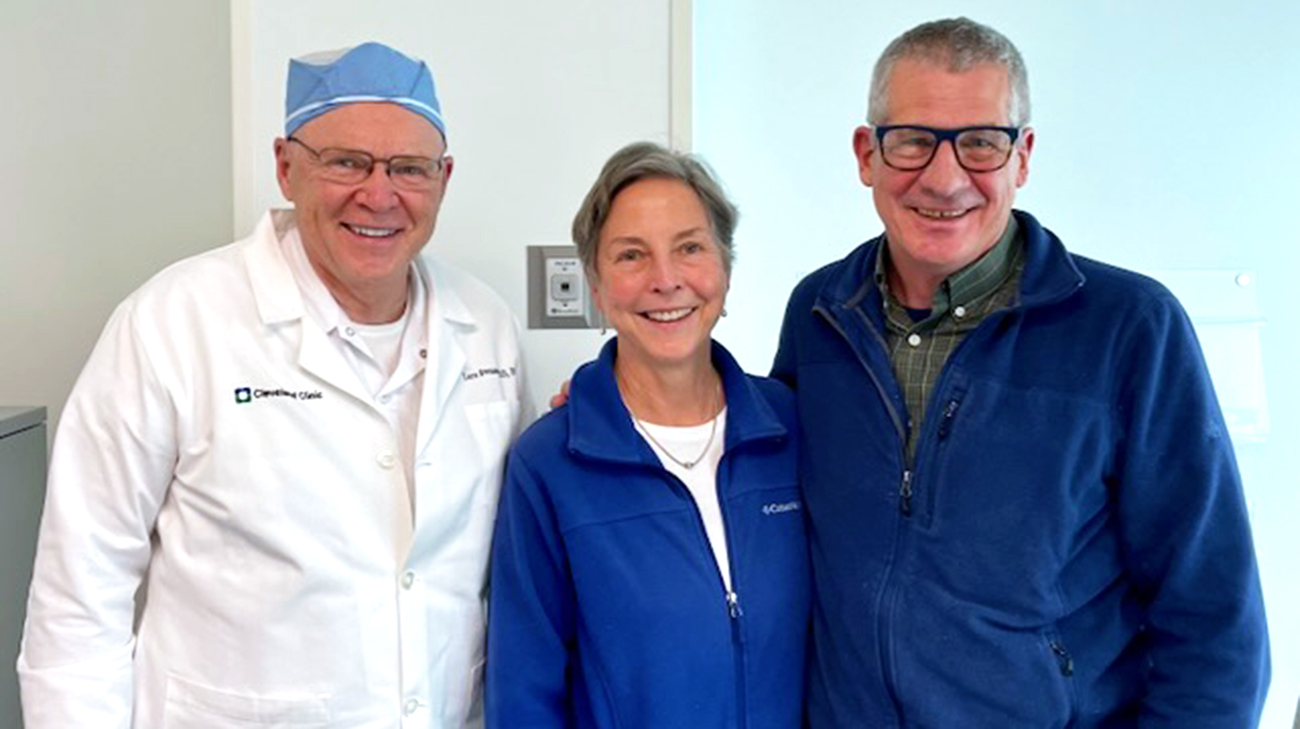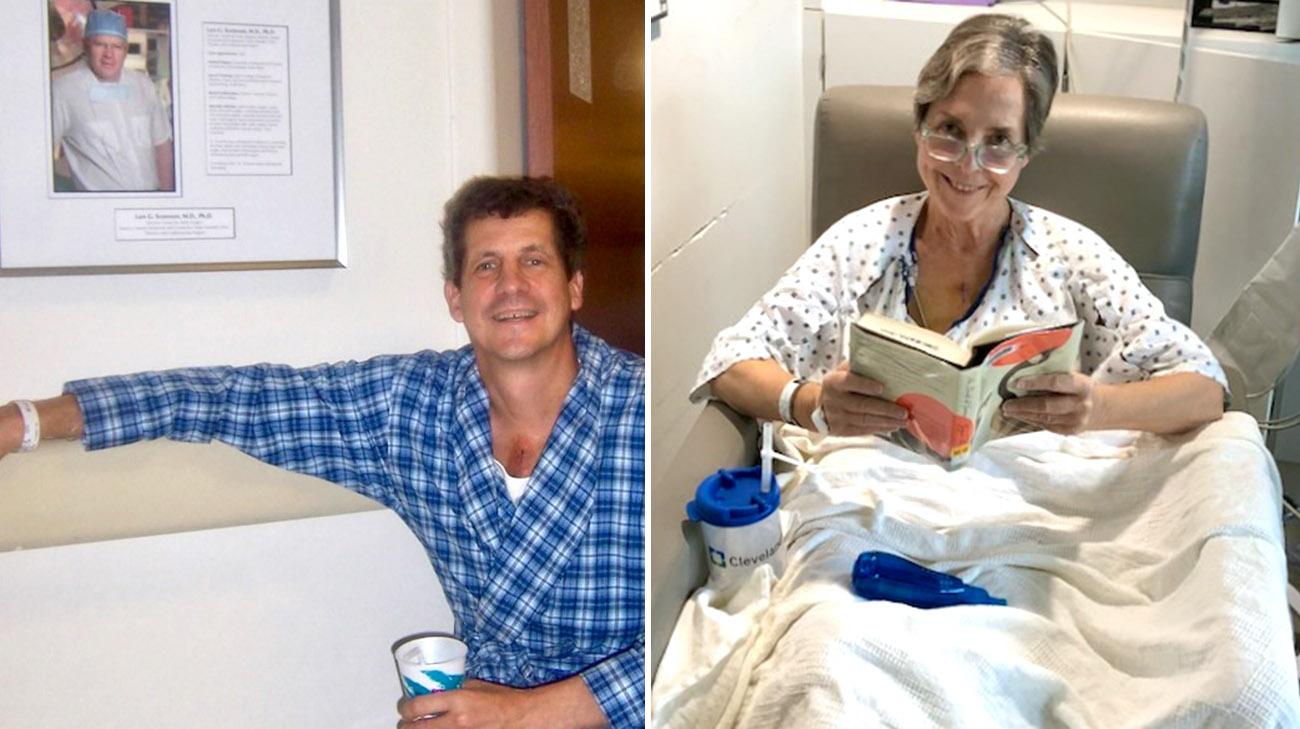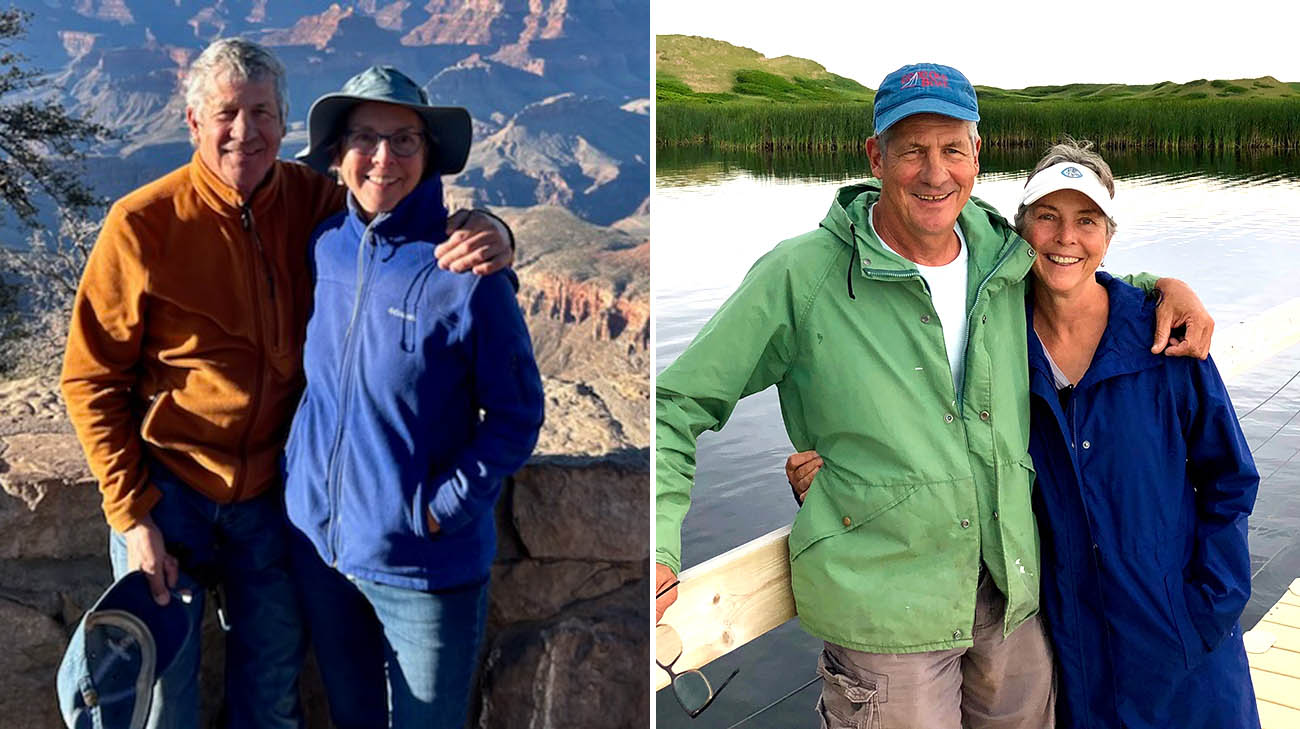
Since 1989, Nate and Marion Weeks have been bonded by love. As husband and wife, they’ve shared many experiences, including roles as patient and caregiver when they each had innovative heart surgeries 18 years apart.
Even more rare, their operations were both performed by the same cardiothoracic surgeon, Lars Svensson, MD, PhD, Chief of the Heart, Vascular & Thoracic Institute at Cleveland Clinic.
For each surgery, the couple traveled to Cleveland. Ohio, from Yarmouth, Massachusetts, on Cape Cod. Both times, they knew Cleveland Clinic was the right place for them.
Nate says his mother died from complications of an aortic dissection in the late 1980s. Because it is a genetic condition, Nate and his two brothers – both doctors – worked with their cardiologists through the years to monitor their heart health.
Nate learned he developed an aortic aneurysm. When there’s a weakness in the wall of a person’s aorta, the pressure of the blood pumping through the artery causes a balloon-like bulge in the weak area. Nate’s aortic aneurysm was enlarged to the point surgery was necessary.
He researched heart specialists and hospitals, including in-person visits, to determine the best place for his surgery. One of Nate’s brothers was familiar with Dr. Svensson’s clinical work and suggested Nate meet with him.
After Nate’s first appointment with Dr. Svensson, he called Marion and said he had made up his mind. “It’s a no-brainer. Cleveland Clinic is the best place to go.” He remembers feeling very confident in Dr. Svensson.

Nate with his father and brother after undergoing heart surgery at Cleveland Clinic. (Courtesy: Nathan and Marion Weeks)
In July 2005, Dr. Svensson performed an aortic valve-sparing procedure on Nate.
Aortic valve surgery involves repairing or replacing the aortic valve, which manages blood flow from the heart’s main pumping chamber (left ventricle) into the main artery (aorta). The aorta sends oxygen-rich blood to the entire body.
Dr. Svensson developed the modified reimplantation operation. Based on 15-year data, 97 percent of patients are doing well after surgery, Dr. Svensson says.
“Dr. Svensson said it was a very good day to do the surgery,” Marion remembers, “because the aneurysm was enlarged and the tissue was as thin as a piece of cellophane.”
Nate and Marion settled back into their active lives on the Cape, raising their daughter, enjoying outdoor activities and their careers -- Nate as an environmental engineer and Marion as a reference librarian and community outreach coordinator.
When Marion was in her 50s, her physician noticed she had a heart murmur. They monitored it for several years, and she had regular echocardiograms, or ultrasounds of the heart. She underwent more extensive testing when she started experiencing shortness of breath from walking or going up a slight incline.

Nate and Marion days after their heart surgeries, 18 years apart, at Cleveland Clinic. (Courtesy: Nathan and Marion Weeks)
Her diagnosis was a defective aortic valve. It was bicuspid, meaning it had two leaflets instead of the usual three. “We were so comfortable with Dr. Svensson and Cleveland Clinic, that’s where we wanted to go,” Marion says.
Bicuspid aortic valve disease is a heart condition present at birth. It means the aortic valve, between the heart and aorta, only has two flaps or cusps instead of three. The aortic valve cusps open and close to regulate blood flow between the heart and aorta. The flaps make sure oxygen-rich blood flows out of the heart and into the aorta.
Marion says they were delighted to learn Dr. Svensson would perform her surgery, too. In January 2023, 18 years after Nate’s surgery, Marion had a successful heart operation.
Nate remembers talking to Dr. Svensson after Marion’s surgery. “He said she definitely needed it, and he used a large replacement biological valve to provide flexibility if another procedure was needed down the road.”
Dr. Svensson adds it is very rare to have a husband and wife both needing heart surgery --one couple in 25,000. For blood relatives, it’s much more common.
Marion says she continues to feel better and enjoys walking every day, rain or shine.
“We operate and give a 100,000-mile guarantee,” Dr. Svensson jokes.

Nate and Marion are enjoying active lives hiking, camping and gardening. (Courtesy: Nathan and Marion Weeks)
“We feel so fortunate,” Marion, now 70, says. “In 2005, Dr. Svensson saved Nate’s life, and we’ve had all this time together.” They are enjoying their retirement by exploring locations across the country via camper, hiking, sailing and gardening.
Their gratitude is expressed in yearly thank-you cards sent to Dr. Svensson with a travel photo or description of their activities.
“He always sends a handwritten note back,” Nate, 69, says, “to say he’s glad we are doing so well.”
Receiving thank-you cards is a highlight for surgeons and physicians, Dr. Svensson says. “It’s wonderful patients take the time to let us know how they are doing.”
And because patients take the time, so does he. “I have seven or eight cards on my desk right now,” Dr. Svensson says. “I will send a note back to all of them. When patients send a follow up, it helps show us our results are excellent. We continue to strive to be the best for our patients.”
Related Institutes: Heart, Vascular & Thoracic Institute (Miller Family)Patient Stories
Perseverance and Focus Help Ovarian Cancer Survivor Beat the Odds HIPEC During Surgery Helps Keep Disease Under Control
Dec 10, 2025
Boy With Advanced Liver Cancer Thriving After Lifesaving Living Organ Donation From Aunt
Dec 8, 2025
Against All Odds A Journey of Recovery After Stroke
Dec 5, 2025
“Dr. Pervez is absolutely incredible, I can’t say enough about him and the speech therapy department. And Cleveland Clinic is phenomenal. They’ve always been wonderful, and I recommend them to everyone I talk to.”


